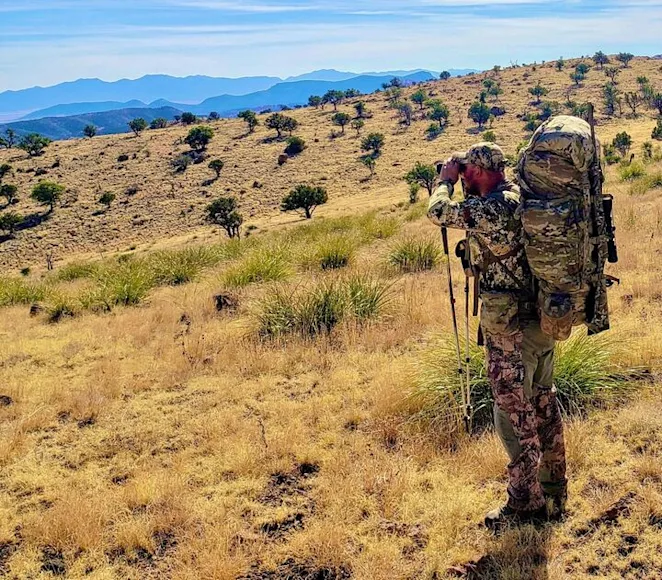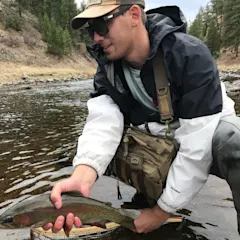The Trump Administration recently announced a national security area in southern New Mexico that stands to severely impact hunting access. In April, the U.S. Department of the Interior transferred 109,651 acres—or 171 square miles—of federal public lands along the southern border between New Mexico and Mexico to the jurisdiction of the U.S. Army.
The strip of land was designated as the “New Mexico National Defense Area,” a military base meant to facilitate the armed forces to help crack down on illegal immigration. But the unilateral designation also appears to have significant implications for public-land users.
Why Should Hunters Care?
Public lands near New Mexico’s border are known for the opportunity to chase critters that can’t be hunted elsewhere in the U.S. “There are three species of quail, the most noteworthy of which is the Mearns quail, which only exists in a small region of the boot heel of New Mexico,” says Garrett VeneKlasen, Northern Conservation Director for the New Mexico Wilderness Alliance. “There are Gould’s turkeys, which are very unique to this area. And there are Coues deer, a desert whitetail subspecies.”
When the tract was initially designated a National Defense Area, it was unclear if hunting would be permitted, as many other military bases in the country do allow hunting, albeit often with strict rules and regulations. However, according to reporting by USA Today, a U.S. Department of Defense (DOD) spokesperson said that “hunting and hiking” will be completely outlawed on the newly designated base. Field & Stream reached out to the DOD directly for comment but did not hear back from the agency.

“This is Department of Defense property," said Defense Secretary Pete Hegseth on a recent visit to the area. "Any illegal [attempt] to enter that zone is entering a military base—a federally protected area. You will be detained. You will be interdicted by U.S. troops and border patrol working together."
Local Conservation Groups Are Criticizing the Designation
Critics of the designation from local conservation groups bashed the DOD for not informing local communities of the designation, incorporating public feedback, or being clear about its boundaries. "When you’re restricting this much acreage, you’re taking away a fundamental American hunting right,” says VeneKlasen. “Public lands belong equally to all Americans." In addition to his role at the New Mexico Wilderness Alliance, VeneKlasen is an avid hunter himself. This year, he drew a coveted Coues deer tag for Unit 26, which he says is the unit that is most impacted. "This just took 110,000 acres away from my hunt. I feel like I got robbed."

Ray Trejo is the Southern New Mexico Outreach Coordinator for the New Mexico Wildlife Federation. He’s also a county commissioner for Luna County, which is situated along the southern border and will be impacted by the new designation. Trejo (an upland bird and big game hunter) is particularly worried about what he says is a lack of clarity over the property lines of the National Defense Area, which he says is not yet well posted.
“It’s not only reckless but it’s dangerous,” he says. “We don’t know where the line is. [The army] has not informed the general public … We have kids on UTVs out there. The last thing I want to see is people getting [arrested] because they’re in a military zone but had no idea that’s where they were.”

Meanwhile, federal public-land access is under threat elsewhere in the country, particularly half-a-million public acres in Utah and Nevada that was slipped into a budget reconciliation bill. Advocates say that it’s more important than ever to reach out to your elected officials and make your voice hear on the importance of public land access.
Read Next: Will DOGE Cuts Bring an End to the Banding of Ducks and Geese?
“Tell them that this is wrong and needs to be changed,” says VeneKlasen. “If people don’t speak up, they and their children, and their children’s children, will have lost an important heritage right.”


